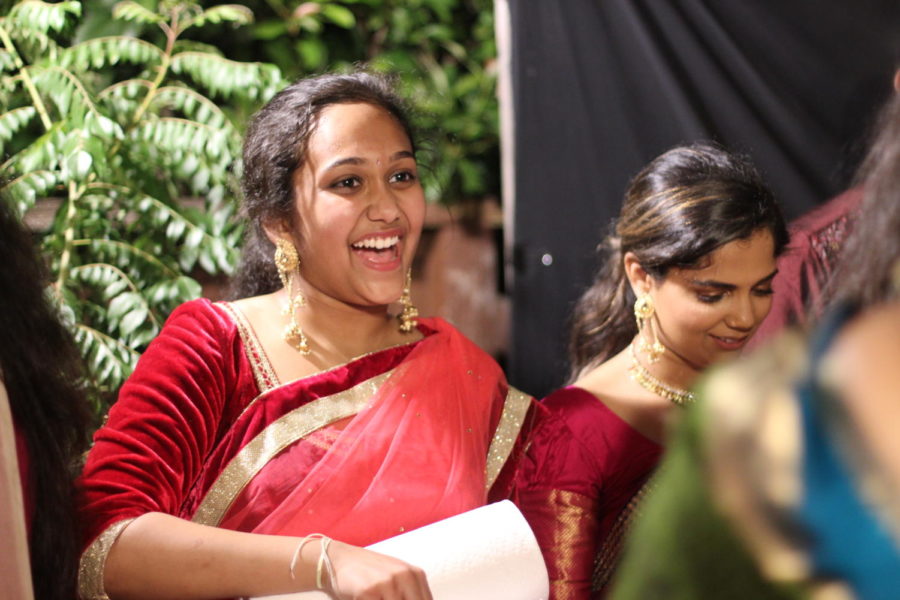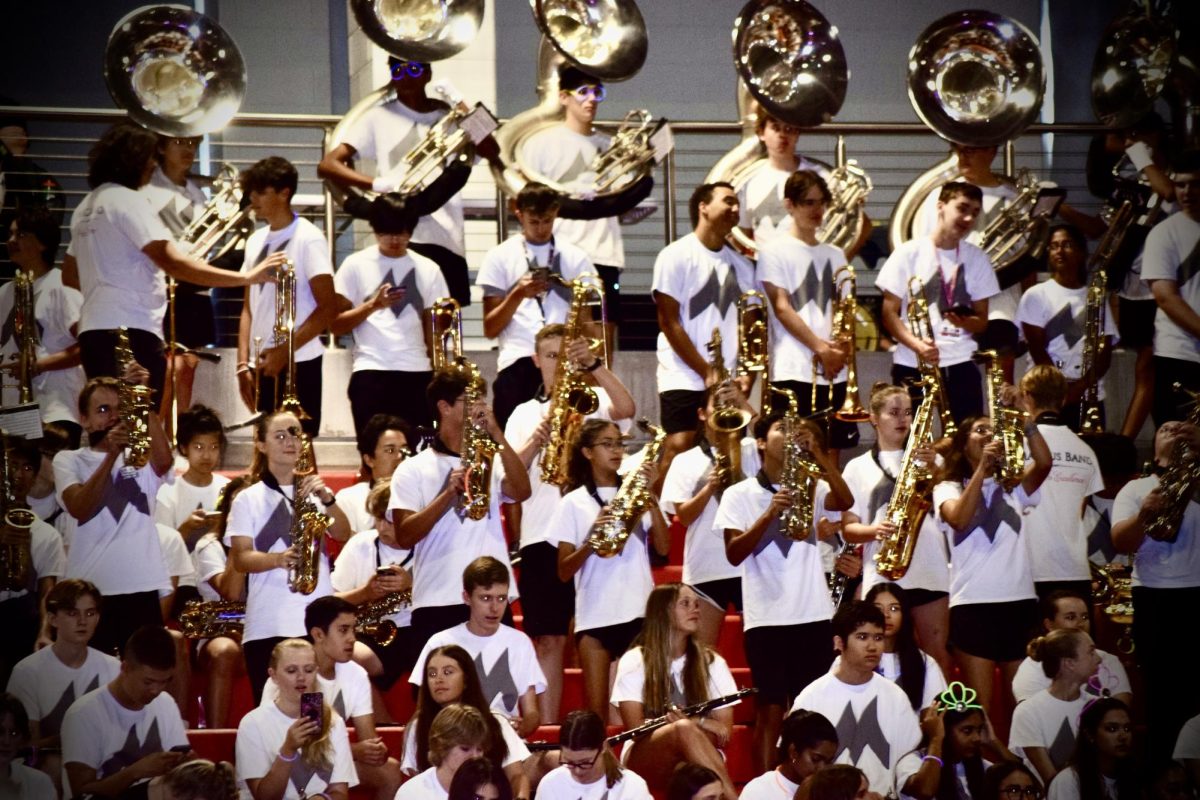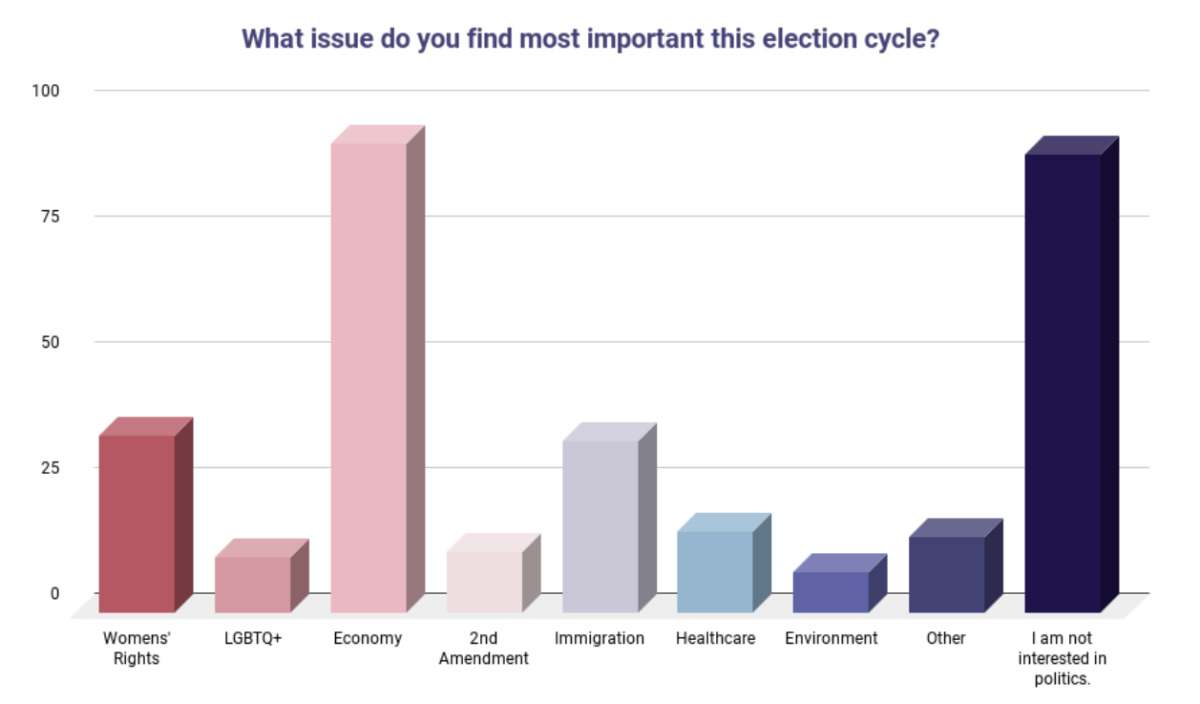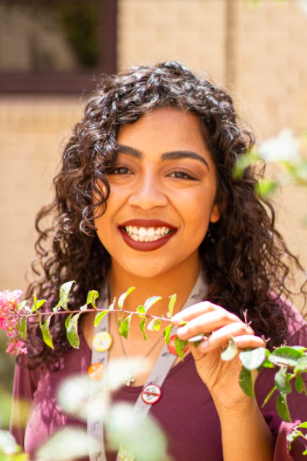The smell of Indian spices filled the air. Streamers, garlands and flower decorations of all colors hung from the ceiling. In the center was the Hindu God Ganesh, perched on a shrine-like altar with steps covered in soft fabric. Yellow and white garlands accompanied silver and gold beaded necklaces around around the neck of Ganesh. There were smaller statues of the god as well. Behind him were bright colored lights
Children ran, giggling and yelling. Teens gathered and talked over one another. The adults sat in a circle near the altar and clapped while singing a song of prayer.
All of this occurred Sept. 15, during a Hindu festival that junior Mahima Mahavadi and her family hosts annually called Ganesh Chaturthi. It celebrates the birth of the god Ganesh. During the festival, their friends, family and people in the neighborhood get together, eat, dance and catch up.
“It’s great because at least once a year we can all get together,” Mahima’s cousin Srikaran Mahavadi said. “Everybody enjoys the event, and everybody comes to help out.”
Growing up in India, Mahima’s parents, Aparna and Sirish Mahavadi, celebrated Ganesh Chaturthi every year. The festival takes place in the streets of India for nine days.
“Everybody celebrates in every house,” Mahima’s mom Aparna said. “The minute you step out you are in the festival.”
People parade down crowded streets singing, dancing and praying around a large statue of Ganesh. Mahima’s parents loved this festival, so they decided to recreate it in the United States.
“I used to wait all year for [Ganesh Chaturthi] to happen,” Aparna said. “The streets were closed, and no work happened in India for nine days.”
The Mahavadi family holds the festival in their backyard. It has gotten so large that they had to expand their patio, so they could fit a bigger stage for performances. Mahima said this is the largest event that happens in their Indian neighborhood. Ganesh Chaturthi is a very inclusive holiday, so all Indians can attend.
Ganesh Chaturthi is considered a unifying holiday because Ganesh is important to all of India. India is divided into states, many speaking different languages, so their celebrations are usually regional.
“We wanted a festival that didn’t create boundaries. Anybody can come and relate to it. They all have stories from [Ganesh Chaturthi], and that’s what we wanted,” Mahima’s father Sirish Mahavadi said.
Ganesh is known as the Remover of Obstacles. He also is known for wisdom and learning. The Mahavadi family prays to him when beginning anything, so that he can give them luck and remove their obstacles
To honor Ganesh they make figurines of him out of clay before the festival. At the end of the festival they submerge the small figurine into water to symbolize him going back up to the heavens.
Her parents grew up in India, so they are connected to their culture and religion because they were so exposed to it growing up. Despite the efforts of Mahima’s parents to integrate Hinduism and Indian culture into her life, she had to experience extraordinary moments herself to fully understand her parents’ spirituality.
***
It was the afternoon on the day of the festival. The day started off with cooking and food preparation, but at noon the family noticed the dark grey clouds as it began to drizzle.
The Mahavadi family looked at each other trying to decide how to save all of their decorations. Kneeling in front of the idol, the festival goers prayed to Ganesh for clear skies. At the end of their prayer it was no longer raining. They celebrated that there festival would go on, be a success and no decorations would be ruined.
“It reinforces my faith [in Ganesh],” Mahima said. “We felt like it was a spiritual thing. He didn’t let it rain on us.”
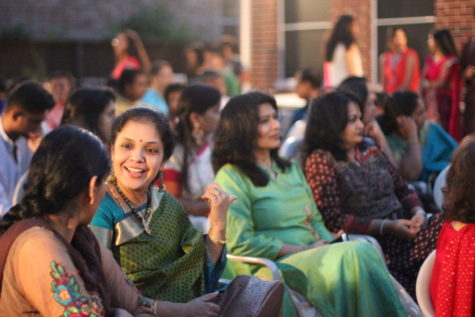
Friends talk and catch up with each other as they enjoy various performances like singing and dancing that the children create and demonstrate. Children have been participating in these performances since the festival started, and the adults enjoy watching the new generations take part in their culture.
***
Along with religion, food is important to the Mahavadi family. Food was lined up as far as the eye could see. For many of the people attending the festival, food was their favorite part of the whole celebration.
“Indian festivals are all about food,” Sirish said. “The first thing we [think] is what do we eat? What do we make?”
Another significant part of the festival is clothes. The women had bright clothing that ranged from blue to pale pink. Mahima and her mom love all the jewelry in particular. They admire all the detailed necklaces and earrings.
“I love dressing up,” junior Risha Bhuta said. “It just makes me happy to be a part my culture. It is like prom for us.”
Many of the performances at the festivals include singing and dancing. Mahima choreographs and participates in these bollywood dances. She has been dancing since first grade and started choreographing two years ago.
The night ended in a dance when people of all ages get together for the dandiya, a dance where people dance while carrying two sticks in hand. Everybody moved in synchronization to the complex beat. They all glided together and clinked their colorful dandiya sticks in unison. Everybody got off their feet and moved to the song. Everybody was smiling and laughter and joyous singing filled the air.
“I like when towards the end we all come together and do dandiya because we all get to dance in different groups and make new friends,” sophomore Namitha Madireddi said. “It is a great way to end the night.”




